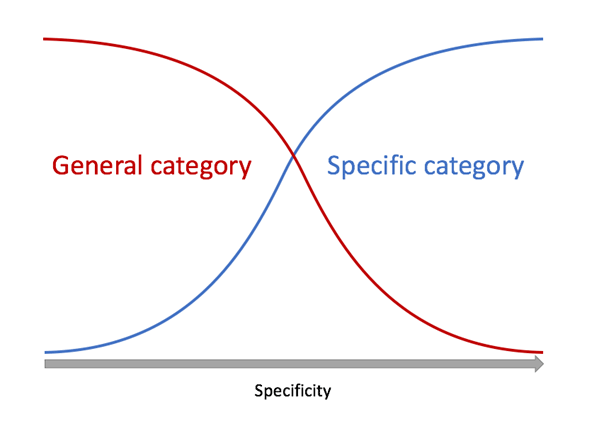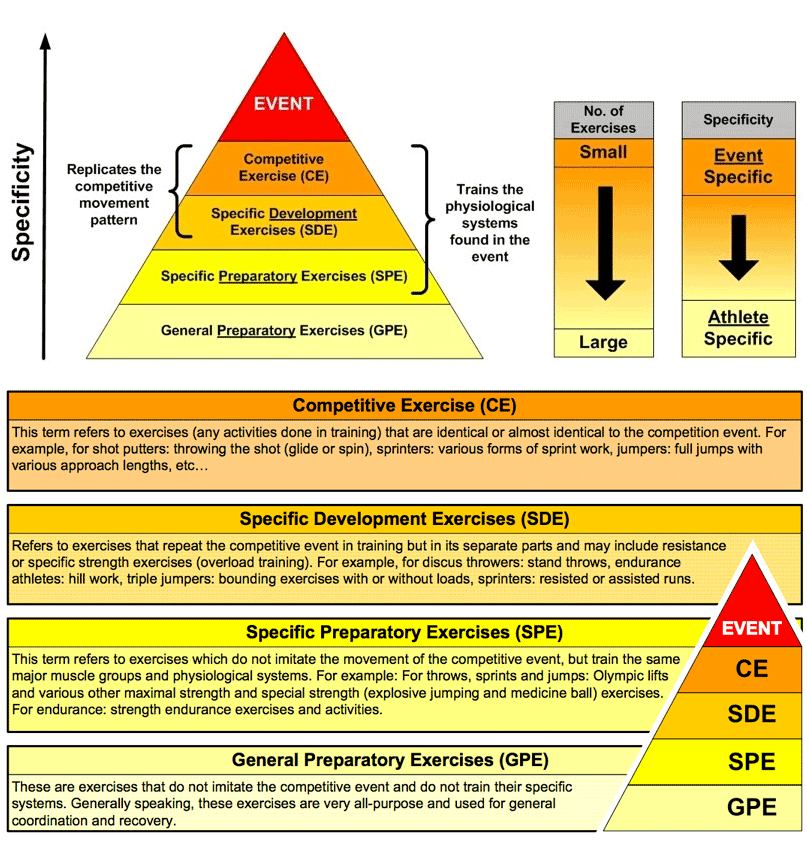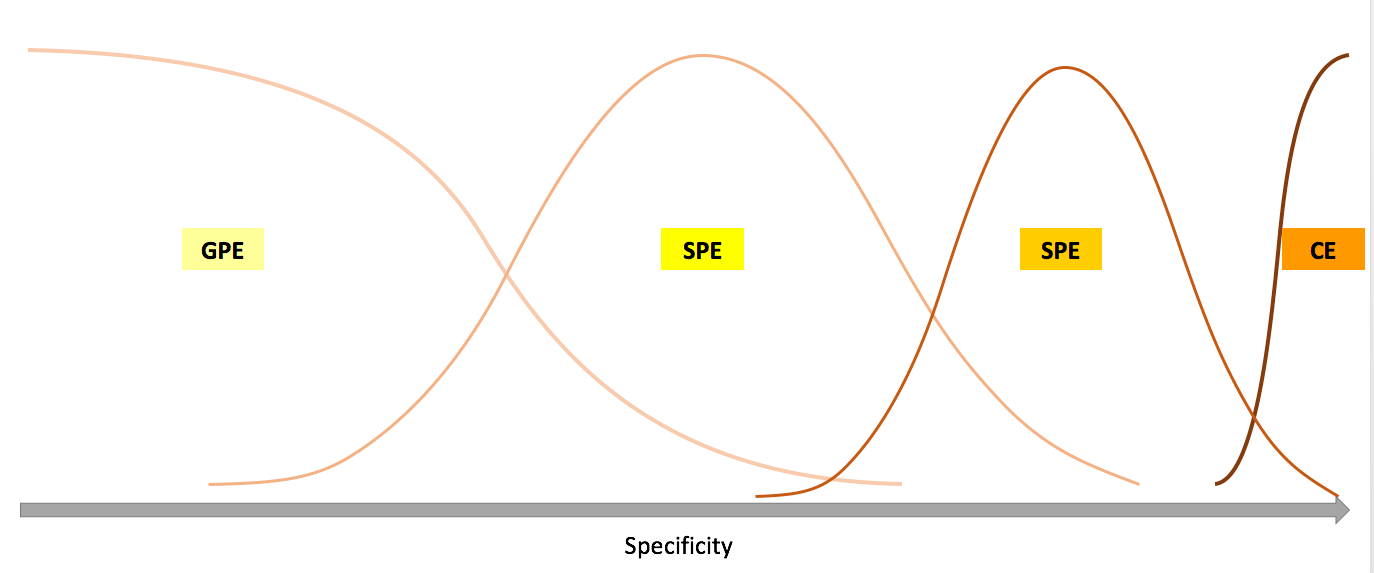Strength Training Categorization – Part 2: Categorization of Exercises
As promised, I am presenting you Part 2 of the Strength Training Categorization article series, where I will touch more on practical aspects of categorization of exercises.
In Part 1 of the article, I have put more emphasis on the theoretical approach to this topic, but in this part, the focus is more on practical aspects of strength training categorization.
Categorization of exercises
As is the case with the objectives, there are multiple ways to categorize strength exercises. For example, using “specificity” (similarity to the competition movement) as a criteria, we pretty much have (1) general and (2) specific exercises. Please note the “fuzzy” borders between them, which makes them more of a continuum, rather than discrete groups.

Figure 17. General vs Specific categories
Utilizing GUT model again, general exercises usually develop some innate (latent) quality (or potential), and specific exercises express that potential (realization). This very in line with Specificity-Overload model by Frans Bosch.

Figure 18. Specificity-Overload model by Frans Bosch
This dichotomist thinking (either/or; either you overload with general mean or you transform with specific) is quite common, although not many coaches are aware of using it (e.g. improve VO2max (potential) and your running performance in the game will improve, or in shot put improve your strength using bench press and transform it by throwing shot put). It is important to realize that these two components in the GUT model (potential/realization) are complementary aspects, and few coaches realized that there is a false dichotomy between them. For example, Bondarchuk is one of them. Bondarchuk realized that one improves potential and realization by utilizing over and under hammer throws. His classification of the exercises is quite famous and utilized in track and field circles:

Figure 19. Exercise classification based on work of Dr Anatoly Bondarchuk and UKA Exercise Classification Hierarchy
Other way to visualize Bondarchuk categorization is using the fuzzy set. As can be see, the GPE exercises take the biggest surface (there is a big “pool” of those exercises), and CE exercises the least amount of surface (there are only few truly competitive exercises that are as specific as competition activity).

Figure 20. Bondarchuk classification
I have used Bondachuk categories in my previous writings and I believe they are truly useful mental model. I have used them to help categorize speed, power, strength and conditioning components and I will rely on them in this book as well. The only “issue” I have with these categories is that they depends on what we are judging specificity against. The categories of exercises might be very different for a powerlifter, as opposed to a rugby player. Take into account that specificity and hence exercises categorization differs between sprinting, acceleration, jump, ruck, maul, shoulder tackling and so forth. So it is hard to pinpoint exact category of an exercise in complex team sports. Besides, most if not all strength exercises for team sport athlete will be in GPE and SPE category. In that way, although very useful as a general viewpoint, Bondachuk categorization is not very useful (lower functional significance) in team sports. For this reason, I will utilize few categorizations that I found have the biggest “forum for action”.
Grinding vs Ballistic and Simple vs Complex
Categorizing exercises to grinding (slow movements; think front squats or deadlift) and ballistic (fast movements; think split squat jumps or hang cleans) is nothing new. On the following picture one can see how objectives lay over grinding to ballistic movements utilization:

Figure 21. Relationship between exercise categories and objectives of strength training
What can be put on top of ballistic and grinding categorization are simple versus complex movements. This way we get a quadrant: on x-axis we have movement time (long time for grinding movements, and short time for ballistic movements) and on y-axis we have complexity axis (from lower complexity to higher complexity). I like to refer to this model as TCM – or Time-Complexity Model.











Responses